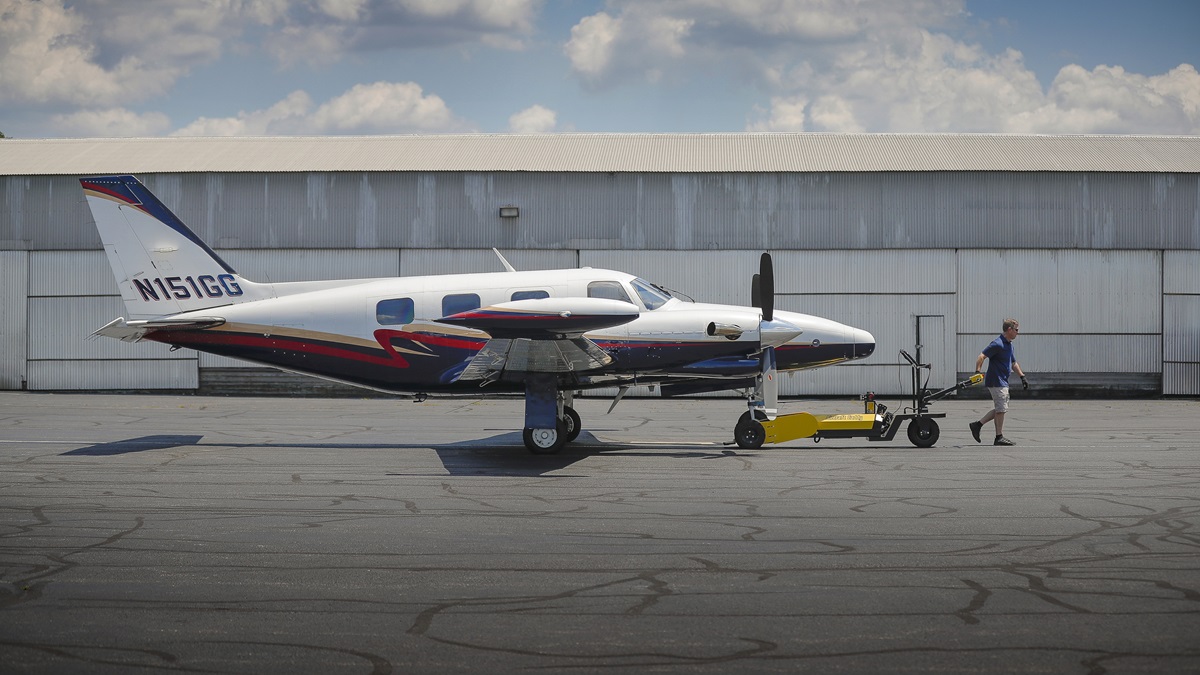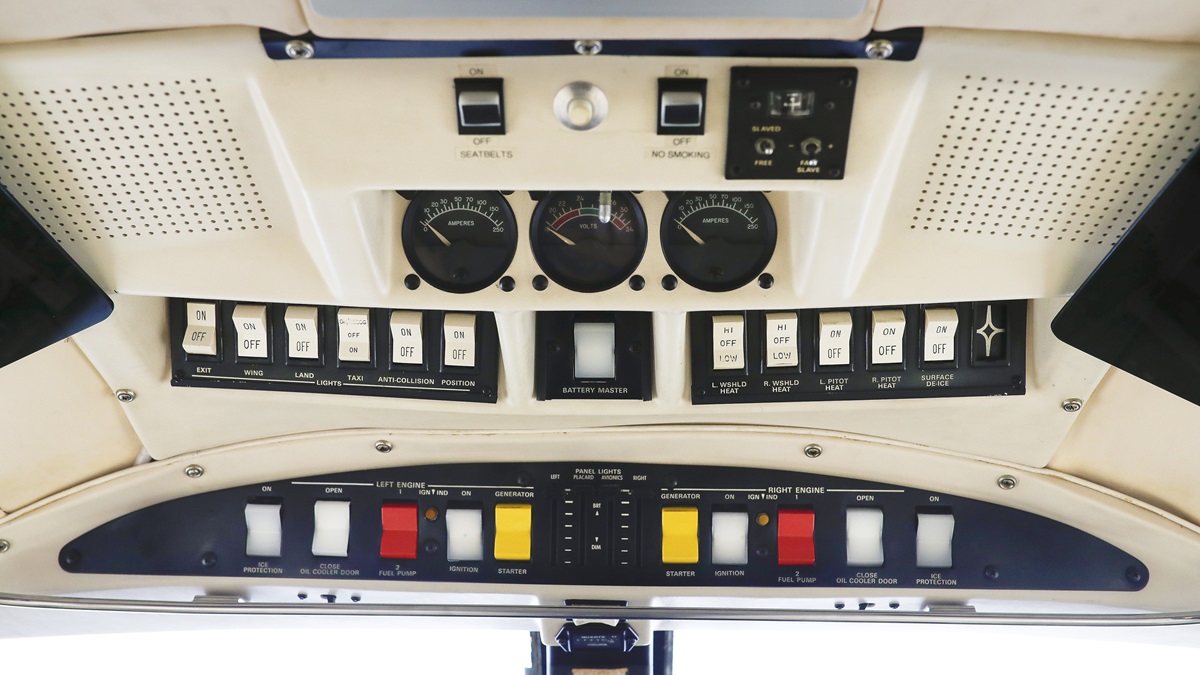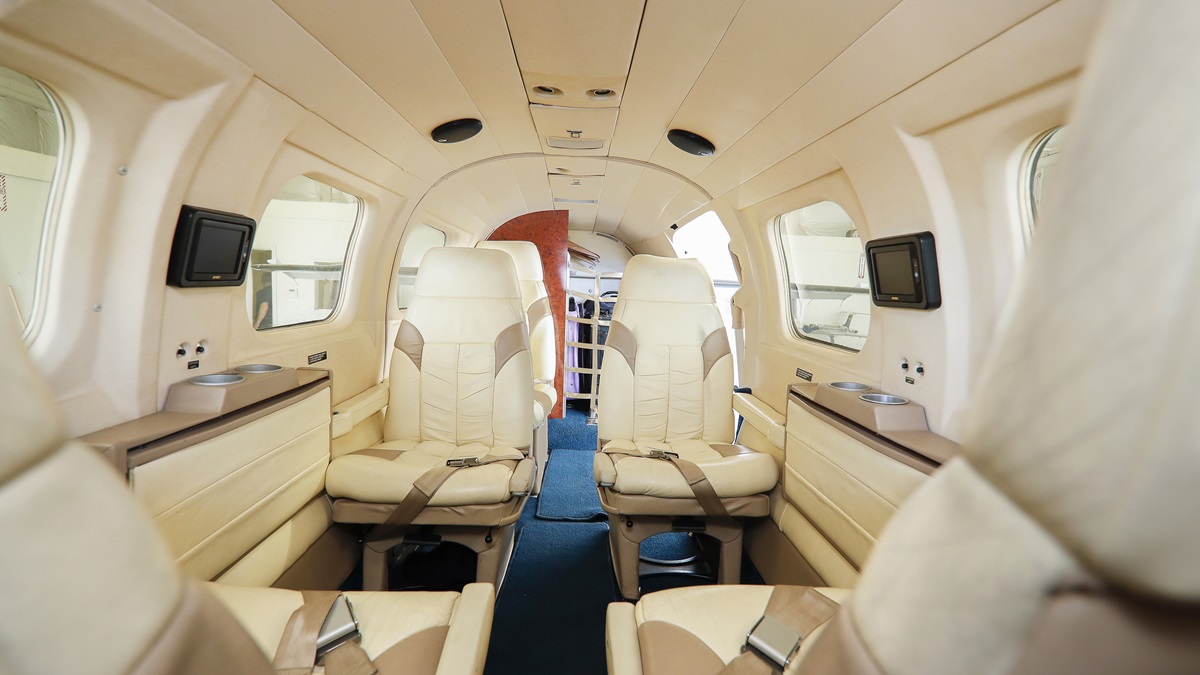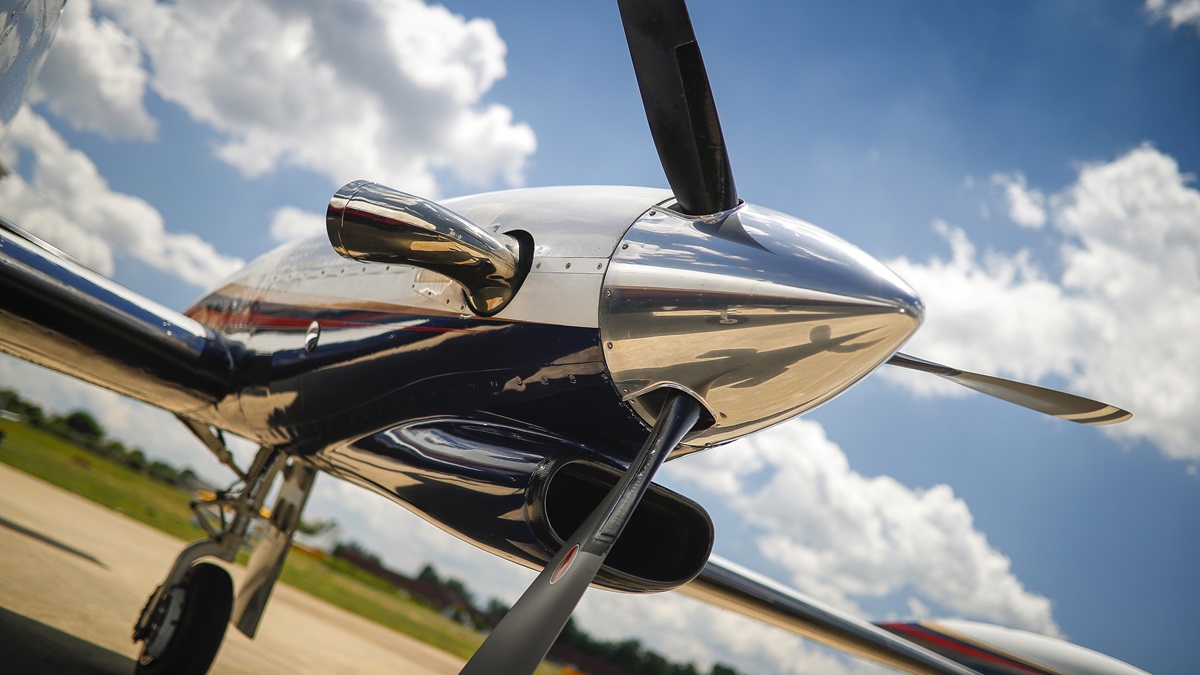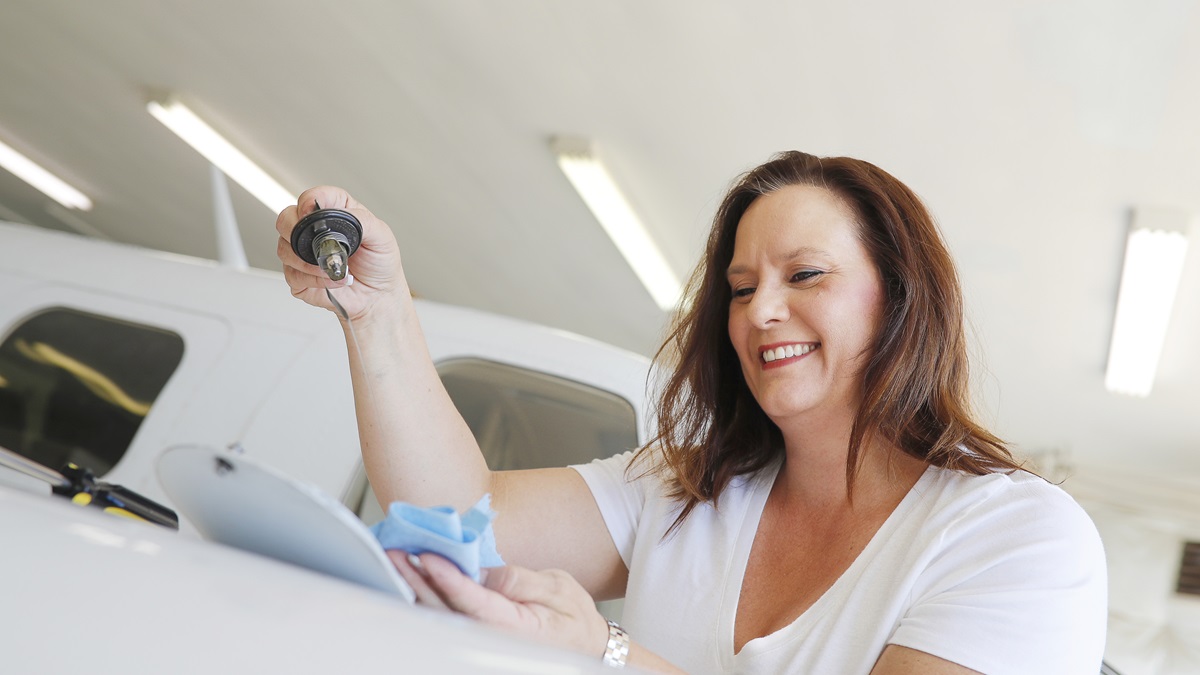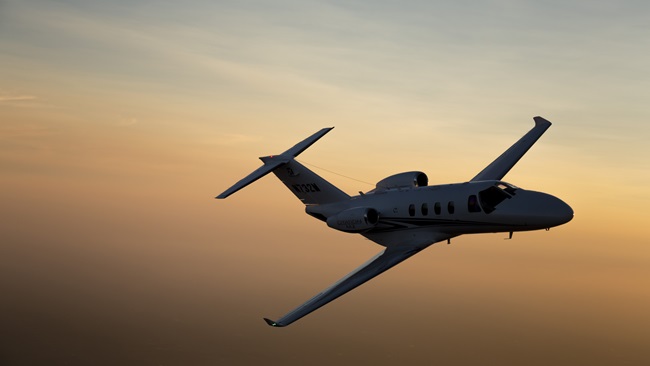An affordable turboprop?
Can a twin turbine be cost effective? One couple thinks so
But used twin turboprops from the 1970s and ’80s have drastically come down in purchase price, making the cost of entry close to that of high-end piston twins. Oh, there’s still the looming overhaul of two (gulp) turbines, to the tune of $500,000—but, under Part 91 operations, there’s no requirement to overhaul at TBO. And if you don’t want to thumb your nose at recommended overhaul intervals, there are maintenance plans that theoretically extend the life of many turbine engines by thousands of hours, often to the point that overhaul may not necessarily be a future responsibility for the average owner who only flies up to a few hundred hours per year. And when you factor in all the costs and benefits, you may be surprised to learn that the true cost of a legacy twin turboprop may be quite close to that of a cabin-class piston twin.
Case in point is the experience of Lisa and Steve Lefferts, both airline pilots from Maryland. They also own a small business and Steve is involved with a Part 135 charter operation. Steve’s a classic over-analyzer with an open mind and savvy business sense who has always been an airplane nut. The latter applies to Lisa as well. Never ones to be satisfied with just with one airplane, the couple’s most recent airplane ownership experiences have been a Piper Twin Comanche with the Miller Turbo 200 mods and a Piper Aerostar Super 700.
While the couple loved the Aerostar’s fingertip handling and performance efficiency at altitude, the annual maintenance costs were on par with entry-level turboprops, specifically the Cheyenne II. Piston airplanes, in general, need more routine maintenance than any turbine. Oil changes every 50 hours or less, 24 spark plugs, four magnetos, vacuum pumps, compression checks—and much more—are seemingly always on the near horizon. Operationally, pistons are more temperamental, especially those that are force-fed with turbochargers. Operating temperatures have to be managed carefully. Preheats are basically required on any starts below freezing. And at some $75,000 each, the engines (including turbos, accessories, and labor), aren’t cheap to overhaul at intervals typically less than 2,000 hours.
Turbine care enters a higher expense bracket but the intervals between maintenance are longer and far less work has to be done, thereby reducing labor costs. Operationally, the turbines are far simpler and less temperamental. Minus 10 degrees out? Fire it up without worrying about preheat. Jet A is around $1 per gallon cheaper than avgas, but turbines burn substantially more fuel, so it will always be a major expense. In return, however, you get runway and climb performance that puts a typical piston twin to shame and vastly increases takeoff safety.
Number-cruncher Steve surmised he could purchase a 1980 Piper Cheyenne II and own it for a similar cost as their Aerostar. After a few years of ownership, his hunch has been verified, and in the meantime, his family has a safer, more capable and comfortable airplane. With a total of 1,240 shaft horsepower on a 9,000-pound airframe, the takeoff and climb performance advantage over the Aerostar is significant. The penalty in fuel burn, on the other hand, is equally significant. High-speed cruise at FL190 is 260 KTAS on 80 gph and long-range cruise at FL250 is 245 KTAS at 68 gph. That’s about double the fuel burn of the Aerostar. On the ground at idle, the Cheyenne burns 30 gph. Depending on winds and power setting, Steve figures an 800- to 1,000-nautical-mile range. Flight Level 210 to FL230 is a good trade-off between speed and fuel burn. Of course, with a turbine, winds are always a big variable in planning. The Leffertses plan on 575 pounds/86 gallons in the first hour and 475 pounds/71 gallons per hour on subsequent hours at maximum cruise power.
On a flight from the Montgomery County Airpark in Gaithersburg, Maryland, to the John Glenn Columbus International Airport in Ohio, the Cheyenne II burned 100 gallons of Jet A and put 1.2 clicks on the Hobbs. Most of the cruise was at FL180 where speed worked out to 257 KTAS on 82 gph at our light weight of 7,200 lbs. It was warmer than standard and density altitude was 20,000 feet. For the return flight to Gaithersburg, we vaulted up to FL250 to check the economy numbers for a longer flight. The Cheyenne II, weighing about 8,000 pounds, turned in a speed of 242 KTAS on 66 gph with a density altitude of 27,100 feet.
Climb performance down low is spectacular. Steve said he nearly always climbs at 140 KIAS to turn in climb rates of 2,500 to 3,000 feet per minute. This gets the Cheyenne to more economical altitudes as quickly as possible and, once there, he can select the power appropriate to the mission of the day. Climb rate does peter out in the upper teens, however. “The Aerostar can outclimb the Cheyenne in the upper teens and is faster in cruise in the mid 20s,” Steve said.
What the Aerostar can’t do is achieve an accelerate-stop distance of 4,000 feet at maximum takeoff weight on an 80-degree day. If an engine fails just after takeoff, the Cheyenne will climb away at 600 to 1,000 fpm, which is about double the single-engine performance of the Aerostar. With beta and reverse thrust, the Cheyenne also uses far less runway on landing. Handling-wise, the Cheyenne won’t be mistaken for the fingertip handling of an Aerostar. If you’ve flown a Piper Navajo, you’ll feel right at home in the Cheyenne, complete with the need for a huge amount of nose-up trim for the landing flare at forward center of gravity. The Cheyenne’s handling is very conventional, unlike the unique handling characteristics of the Mitsubishi MU–2, for example.
So what’s the true cost of ownership? “This is where the Cheyenne shines,” said Steve. “From what I can tell there is no other turboprop that will operate as economically. The MU–2 has very attractive operating cost numbers with respect to fuel and maintenance, but the market has appreciated and good ones are much more expensive to buy than a comparable Cheyenne. Yearly maintenance costs [of the Cheyenne] look to be about half or less than a comparable [Beechcraft] King Air. You have to look a little harder for shops with Cheyenne experience than for a King Air, but they are out there. Any shop with PT6 experience should be able to take care of one. There are a few expensive and hard-to-find parts, and that won’t get better with time, but that’s reflected in the market values.” The Leffertses budget about $20,000 per year for maintenance.
The family took a recent trip to Tampa, Florida, and Steve ran the numbers for the Cheyenne versus the Aerostar 700. “ The Cheyenne burns 50 percent more fuel per hour, but my block speed is around 10 percent faster and I buy the fuel for 25 to 35 percent less than avgas,” said Steve. “On the trip to Florida, using that day’s actual winds and actual fuel loads and fuel pricing, the Cheyenne was within 5 percent of the Aerostar in fuel cost and, of course, shorter flight time—all with a hot beverage dispenser and a potty.” The Leffertses praise the general ease of use and simplicity of the Cheyenne as well as its excellent performance for the price. “It has fantastic load versus fuel flexibility,” said Steve. “Basically, a real turboprop that operates for the cost of a pressurized piston twin.”
Legacy equipment in the panel include the Bendix DH-866 attitude indicator/flight director and Bendix M4D autopilot. Both units are serviceable for now and work well for the family’s missions. A Garmin 530/430 combination with FlightStream 210 provides communications and navigation via a Sandel EHSI and GPS roll steering. ADS-B is provided through a Garmin GTX 345 transponder. On the couple’s wish list is raising the glareshield slightly as the eyebrow lights and the top of the torque gauges are hard to see unless you lower your seat or crane your neck.
A highly variable cost is hangars. Something like a Beechcraft Baron 58P can fit into a T-hangar, which minimizes storage costs. The Cheyenne needs a large T- or gang hangar. For the budget conscious, one could choose to skip the hangar, but that’ll cut into utility and convenience on frosty mornings, for example. In the Lefferts family’s case, the Aerostar couldn’t fit in their local airport’s T-hangars, so storage for the Cheyenne was a neutral cost.
Recently, the Leffertses had the Cheyenne’s engines’ hot sections inspected to the tune of about $16,000 each, and the looming expense was reflected in the price they paid for the airplane. This is a required inspection halfway to the 3,600-hour Pratt & Whitney TBO. MORE (Maintenance on Reliable Engines) is an Arizona-based company that can extend the TBO based on condition observed during the hot-section inspections. In the case of the -28 engines on the Cheyenne II, TBO goes out to 8,000 hours if an engine meets its stringent specs. “History has shown that a PT6 will go thousands and thousands of hours with no issues far beyond the factory TBO,” said Steve. “It’s not a free lunch—you have to keep certain components in tighter specs but complying with the STC, you’re way ahead of the cost of doing an overhaul at the factory TBO.” It should be noted that factory TBO for versions of the Honeywell (Garrett) TPE-331 have been extended to 5,400 hours and beyond as they’ve proven their reliability. Pratt & Whitney, however, seems to be holding firm.
Lisa and Steve Lefferts’s turbine experience has been good so far. If they continue to use the airplane as a business and personal steed, it will provide decades of service on the current engines at their current rate. The option is also open to put the airplane on a Part 135 certificate if they purchase the MORE STC. While the experiment is ongoing, the Leffertses have been very happy with the performance, economy, and maintenance of their Cheyenne II so far.
